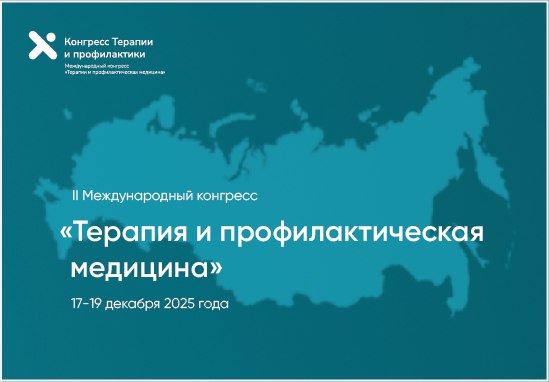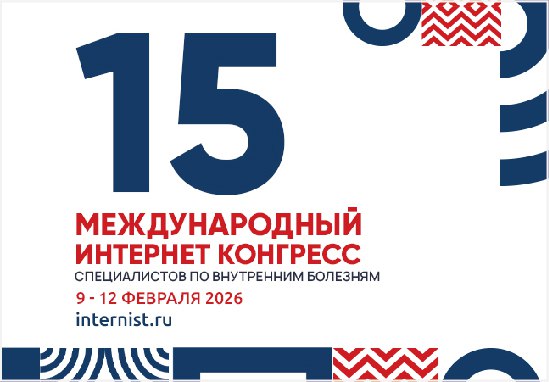Роль нейтрофилов в патогенезе атеросклероза
https://doi.org/10.15829/1728-8800-2018-6-110-116
Аннотация
Атеросклероз (АС) является одной из причин сердечно-сосудистых заболеваний. Формирование атеросклеротического поражения артерий — длительный процесс, а клинические симптомы проявляются уже на стадии атеросклеротической бляшки, которая стенози-руя сосуд, препятствует кровотоку, и может вызвать ишемическую болезнь сердца, а также острый коронарный синдром. В связи с чем, изучение механизмов АС на субклиническом уровне является актуальным. В представленной статье приводятся обобщенные современные данные о строении и функциях нейтрофилов (НФ) в физиологических процессах. Особое внимание в обзоре уделено участию НФ в повреждении и формировании дисфункции эндотелия сосудов как одного из основных звеньев патогенеза АС. Обсуждается несколько возможных механизмов участия НФ в ате-рогенезе: продукция активных форм кислорода, вызывающих непосредственное повреждение эндотелия; синтез цитокинов, активирующих миграцию лейкоцитов в очаг воспаления; образование белковых комплексов с холестерином, способствующих их отложению в сосудах, и формирование нейтрофильных ловушек, запускающих деструктивно-альтеративные реакции.
Об авторах
Ю. В. СаранчинаРоссия
Саранчина Юлия Владимировна — кандидат биологических наук, доцент кафедры фундаментальной медицины и гигиены.
Абакан
С. В. Дутова
Россия
Дутова Светлана Вячеславовна — доктор фармакологических наук, доцент кафедры фундаментальной медицины и гигиены.
Абакан
О. Ю. Килина
Россия
Н. В. Ханарин
Россия
Ханарин Николай Владимирович — кандидат медицинских наук, доцент кафедры общепрофессиональных дисциплин.
АбаканТ. С. Кулакова
Россия
Кулакова Татьяна Сергеевна — ординатор кафедры внутренних болезней.
Абакан
Список литературы
1. Health in Russia. Stat. SB. / Rosstat. M., 2017. p.170. (In Russ.) Здравоохранение в России. Стат.сб./Росстат. М., 2017. 170 с. ISBN 978-5-89476-448-1.
2. Townsend N, Wilson L, Bhatnagar P, et al. Cardiovascular disease in Europe: epidemiological update. Eur Heart J. 2016;37(42):3232-45. doi:101093/eurheartj/ehw334.
3. Oreska S, Tomcik M. Atherosclerosis and Cardiovascular Risk in Systemic Sclerosis. Systemic Sclerosis. 2017;23-60. doi:10.5772/67495.
4. Toth PP. Subclinical atherosclerosis: what it is, what it means and what we can do about it. Int J Clin Pract. 2008;62(8):1246-54. doi:10.1111/j.1742-1241.2008.01804.x.
5. Peterson ED, David D, Elizabeth RD, et al. Contemporary Mortality Risk Prediction for Percutaneous Coronary Intervention. JACC. 2010;55(18):1923-32. doi:101016/j.jacc.2010.02.005.
6. Meizels A, Zeitoun DM, Bataille V, et al. ALLIANCE investigators. Impact of polyvascular disease on baseline characteristics, management and mortality in acute myocardial infarction. The Alliance project. Arch Cardiovasc Dis. 2010;103(4):207-14. doi:10.1016/j.acvd.2010.02.002.
7. Miura T, Soga Y, Doijiri T, et al. Prevalence and clinical outcome of polyvascular atherosclerotic disease in patients undergoing coronary intervention. Circ J. 2013;77(1):89-95. doi:10.1253/circj.cj-12-0535.
8. Cooke PJ, Wilson MA. Biomarkers of peripheral arterial disease. JACC. 2010;55(19):2017-23. doi:10.1016/j.jacc.2009.08.090.
9. Weber C, Zernecke A, Libby P. The multifaceted contributions of leukocyte subsets to atherosclerosis: lessons from mouse models. Nat Rev Immunol. 2008;8:802-15. doi:10.1038/nri2415.
10. Xue-Mei L, Jie C, Xuan D, et al. Changes in CD4+CD25+ Tregs in the pathogenesis of atherosclerosis in ApoE-/- mice. Exp Biol Med (Maywood). 2017;242(9):918-25. doi:10.1177/1535370216689826.
11. . Bobryshev YV Dendritic cells and their role in atherogenesis. Laboratory Investigation. 2010;90(7):970-84. doi:10.1038/labinvest.2010.94.
12. Galkina E, Ley K. Immune and inflammatory mechanisms of atherosclerosis. Ann Rev Immunol. 2009;27:165-97. doi:10.1146/annurev.immunol.021908.132620.
13. Greaves DR, Gordon S. The macrophage scavenger receptor at 30 years of age: current knowledge and future challenges. J Lipid Res. 2009;50(Suppl):S282-6. doi:10.1194/jlr.r800066-jlr200.
14. Sahinarslan A, Kocaman SA, Bas D, et al. Plasma neutrophil gelatinase-associated lipocalin levels in acute myocardial infarction and stable coronary artery disease. Coron Artery Dis. 2011;22(5):333-8. doi:10.1097/MCA.0b013e3283472a71.
15. Oberoi R, Bogalle EP, Matthes LA, et al. Lipocalin (LCN) 2 Mediates ProAtherosclerotic Processes and Is Elevated in Patients with Coronary Artery Disease. PLoS One. 2015;10(9):e0137924. doi:10.1371/journal.pone.0137924.
16. Eilenberg W, Stojkovic S, Kaider A, et al. NGAL and MMP-9/NGAL as biomarkers of plaque vulnerability and targets of statins in patients with carotid atherosclerosis. Clin Chem Lab Med. 2017;56(1):147-56. doi:10.1515/cclm-2017-0156.
17. Sivalingam Z, Larsen SB, Grove EL, et al. Neutrophil gelatinase-associated lipocalin as a risk marker in cardiovascular disease(Review). Clinical Chemistry and Laboratory Medicine. 2017;56(1):5-18. doi:10.1515/cclm-2017-0120.
18. Pertiwi KR, Van Der Wal AC, Pabittei DR, et al Neutrophil Extracellular Traps Participate in All Different Types of Thrombotic and Haemorrhagic Complications of Coronary Atherosclerosis. Thrombosis and Haemostasis. 2018;118(6):1078-87. doi:10.1055/s-0038-1641749.
19. Vasu S, Leitman SF, Tisdale JF, et а!. Donor demographic and laboratory predictors of allogeneic peripheral blood stem cell mobilization in an ethnically diverse population. Blood. 2008;112(5):2092-100. doi:10.1182/blood-2008-03-143677.
20. Nesterova IV, Kolesnikova NV, Chudilova GA, et al. The new look at neutrophilic granulocytes: rethinking old dogmas. Part 1. Russian Journal of Infection and Immunity. 2017;7(3):219-30. doi:10.15789/2220-7619-2017-3-219-230.
21. Nesterova IV, Kolesnikova NV, Chudilova GA, et al. The new look at neutrophilic granulocytes: rethinking old dogmas. Part 2. Russian Journal of Infection and Immunity. 2018;8(1):7-18. doi:10.15789/2220-7619-2018-1-7-18.
22. Fox S, Leitch AE, Duffin R, et al. Neutrophil apoptosis: relevance to the innate immune response and inflammatory disease. J Innate Immun 2010;2:216-27. doi:10.1159/000284367.
23. Bao Y, Cao X. Revisiting the protective and pathogenic roles of neutrophils: Ly-6G is key. Eur J Immunol. 2011;41:2535-8. doi:10.1002/eji.201141979.
24. Fuchs T, Puellmann K, Scharfenstein O, et al. The neutrophil recombinatorial TCR-like immune receptor is expressed across the entire human life span but repertoire diversity declines in old age. Biochem Biophys Res Commun. 2012;419(2):309-15. doi:10.1016/j.bbrc.2012.02.017.
25. Winterbourn CC, Kettle AJ. Redox reactions and microbial killing in the neutrophil phagosome. Antioxid Redox Signal. 2013;18(6):642-60. doi:10.1089/ars.2012.4827.
26. Mantovani А, Cassatella MC, Costantini C, et al. Neutrophils in the activation and regulation of innate and adaptive immunity. Nat Rev Immunol. 2011;11(8):519-31. doi:10.1038/nri3024.
27. Smuda C, Wechsler JB, Bruce PJ TLR-induced activation of neutrophils promotes histamine production via a P13 kinase dependent mechanism. J Immunol Lett. 2011;141(1):102-8. doi:10.1016/j.imlet.2011.08.002.
28. Pant S, Deshmukh A, Gurumurthy G, et al. Inlammation and atherosclerosis — revisited. J Cardiovascular Pharmacology and Therapeutics. 2014;2(19):170-8. doi:10.1177/1074248413504994.
29. Fadini GP, Menegazzo L, Scattolini V, et al. A perspective on NETosis in diabetes and cardiometabolic disorders. Nutr Metab Cardiovasc Dis. 2016;26(1):1-8. doi:10.1016/j.numecd.2015.11.008.
30. Grechowa I, Horke S, Wallrath A, et al. Human neutrophil elastase induces endothelial cell apoptosis by activating the PERK-CHOP branch of the unfolded protein response. FASEB J. 2017;31(9): 3868-81. doi:10.1096/fj.201700012r.
31. Hoyer FF, Nahrendorf M. Neutrophil contributions to ischaemic heart disease. Eur 46. Heart J. 2017;38:465-72. doi:10.1093/eurheartj/ehx017.
32. Qi H, Yang S, Zhang L. Neutrophil Extracellular Traps and Endothelial Dysfunction in Atherosclerosis and Thrombosis. Front Immunol. 2017;7,8:928. doi:10.3389/fimmu.2017.00928.
33. Chistiakov DA, Bobryshev YV, Orekhov AN. Neutrophil's weapons in atherosclerosis (Review). Experimental and Molecular Pathology. 2015;99(3):663-71. doi:10.1016/j.yexmp.201511.011.
34. Brevetti G, Giugliano G, Brevetti L, et al. Inflammation in peripheral artery disease. Circulation. 2010;122(18):1862-75. doi:10.1161/CIRCULATIONAHA.109.918417.
35. Dunn J, Simmons R, Thabet S, et al. The role of epigenetics in the endothelial cell shear stress response and atherosclerosis. Int J Biochem Cell Biol. 2015;67:167-76. doi:10.1016/j.biocel.2015.05.001.
36. Rahman A, Fazal F. Blocking NF-kappaB: an inflammatory issue. Proc Am Thorac Soc. 2011;8(6):497-503. doi:10.1513/pats.201101-009MW.
37. Xiao L, Liu Y, Wang N. New paradigms in inflammatory signaling in vascular endothelial cells. Am J Physiol Heart Circ Physiol. 2014;306(3):H317-25. doi:10.1152/ajpheart. 00182.2013.
38. Chistiakov DA, Grechko AV, Myasoedova VA, et al. The role of monocytosis and neutrophilia in atherosclerosis. J Cell Molec Med. 2018;22(3):1366-82. doi:10.1111/jcmm.13462.
39. Hattar K, Heygster D, Eul B, et al. Amplification of LPS and LTA induced cytokine synthesis in NSCLC/neutrophil cocultures. J Clin Oncol. 2008;26(15):22198. doi:10.1200/jco.2008.26.15_suppl.22198.
40. Zychlinsky A. NETs: a new strategy for using old weapons. Trends in Immunology. 2009;30(11):513-21. doi:10.1016/j.it.2009.07.011.
41. Цыбиков Н. Н., Паршина А. А. Нейтрофильные внеклеточные ловушки. Успехи современной биологии. 2018;138(5) :488-502. doi:10.7868/S004213241805006X.
42. Devarajan P. Neutrophil gelatinase-associated lipocalin—an emerging troponin for kidney injury. Nephrology Dialysis Transplantation. 2008;23:12:е3737-43. doi:10.1093/ndt/gfn531.
43. Nelson AM, Zhao W, Gilliland KL, et al. Temporal changes in gene expression in the skin of patients treated with isotretinoin provide insight into its mechanism of action. DermatoEndocrinology. 2009;1(3):177-87. doi:10.4161/derm.1.3.8258.
44. Pinelli A, Trivulzio S, Rossoni G, et al. Factors involved in sudden coagulation observed in patients with acute myocardial infarction. In Vivo. 2012;26(6):1021-5. doi:10.4172/2155-9880.1000202.
45. Щупакова А. Н., Окулич В. К., Беляева Л. Е. и др. Протеолитическая активность нейтрофильной эластазы как прогностический фактор развития заболеваний сердечно-сосудистой системы. Вестник ВГМУ 2016;15(2):17-26. doi:10.22263/2312-4156.2016.2.17.
46. Ruparelia N, Chai JT, Fisher EA, et al. Inflammatory processes in cardiovascular disease: a route to targeted therapies. Nat Rev Cardiol. 2017;14(3):133-44. doi:10.1038/nrcardio.2016.185.
47. Sokolova LK, Pushkarev VM, Pushkarev VV, et al. Diabetes mellitus and atherosclerosis. The role of inflammatory processes in pathogenesis (literature review). Intern J Endocrinol. 2017;13(7):486-98. doi:10.22141/2224-0721.13.7.2017.115747.
48. White GE, Iqbal AJ, Greaves DR. CC chemokine receptors and chronic inflammation — therapeutic opportunities and pharmacological challenges. Pharmacol Rev. 2013;65(1):47-89. doi:10.1124/pr.111.005074.
Рецензия
Для цитирования:
Саранчина Ю.В., Дутова С.В., Килина О.Ю., Ханарин Н.В., Кулакова Т.С. Роль нейтрофилов в патогенезе атеросклероза. Кардиоваскулярная терапия и профилактика. 2018;17(6):110-116. https://doi.org/10.15829/1728-8800-2018-6-110-116
For citation:
Saranchina Yu.V., Dutova S.V., Kilina O.Yu., Khanarin N.V., Kulakova T.S. The role of neutrophils in the pathogenesis of atherosclerosis. Cardiovascular Therapy and Prevention. 2018;17(6):110-116. (In Russ.) https://doi.org/10.15829/1728-8800-2018-6-110-116

























































